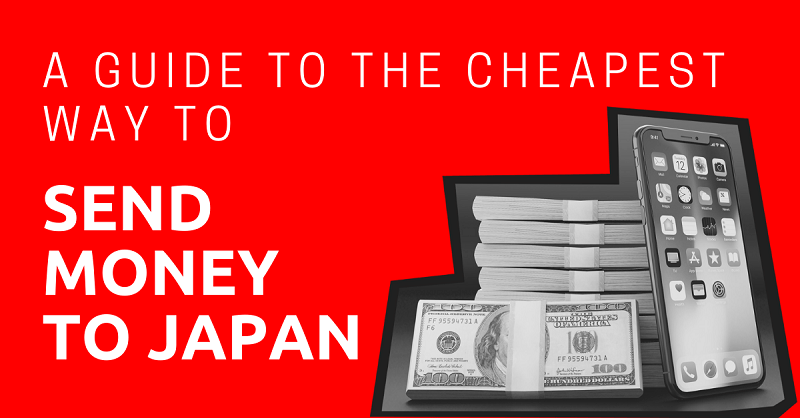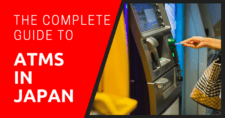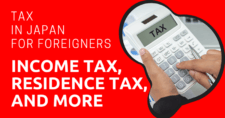
There are a lot of differences in the way Japan and the rest of the world work, but when it comes to sending money into the country, you’ll find that the process is almost the same as anywhere else in the world.
However, you have to know where to look in order to get the most JPY for your money – and that’s what this guide is going to help you with.
By the end of this guide, you’ll know what to look for, what services are best under each circumstance, and what to avoid.
This article will take approximately 13 minutes to read. Don't have the time right now? No worries. You can email the ad-free version of the article to yourself and read it later!
Disclaimer: This article may include links to products or services offered by ExpatDen’s partners, which give us commissions when you click on them. Although this may influence how they appear in the text, we only recommend solutions that we would use in your situation. Read more in our Advertising Disclosure.
Contents
What to Watch Out for When Sending Money to Japan
Before you start sending money to Japan from abroad, there are three crucial things that you should take a close look at.
Transfer Fees
When sending money from your bank account in your home country to a bank account in Japan, there are the different types of fees to be mindful of, and then are:
- fixed fees
- percentage fees
- combination fees
Now, let’s take a closer look at these three fees.
Fixed Fees
The first fee you’ll encounter when sending money to Japan is a fixed fee. A fixed fee won’t change regardless if you send USD1,000 to USD10,000 to Japan.
For example, Bank of America charges USD45 regardless of how much money you transfer into the country.
However, if you’re sending USD1,000 than paying a USD45 fee won’t make much sense. Fixed fees work out well when transferring large sums of money – usually over USD10,000.
Percentage Fees
Percentage fees, in contrast to fixed fees, vary by the amount of money that you transfer into Japan.
When using Wise, for example, the cost of a USD1,000 transfer is 1.012 percent, which translates to USD10.12 in percentage fees.
As you can see, percentage fees work out to be a lot cheaper than fixed fees for small transfers, so when sending money to cover your general living expenses each month in Japan, this may be your go-to choice.
Combination Fees
Lastly are combination fees, which are a mix of both fixed and percentage fees.
Usually PayPal, Western Union, and most banks use this kind of fee structure.
With that said, this will be your most costly way to transfer money, so it’s best to avoid paying combination fees if at all possible.
Now that we got the fees out of the way, let’s take a closer look at exchange rates.
Exchange Rates
Aside from Wise, few online money transfer service providers offer mid-market rates, so double-check that the exchange rate you’re getting is close to the mid-market rate found on XE before proceeding with your transfer.
But keep in mind that better exchange rates don’t always guarantee you’ll get more money in the transfer process. Some money transfer service providers take a good chunk in fees.
That said, always weight your options carefully – and with a calculator.
Transfer Speeds
Knowing how long a money transfer into Japan takes helps if you have to make recurring payments or maintain your financial stability.
In general, it takes one to three working days to send money into the country using Wise or Xendpay.
If you use Western Union, you may be able to get your money within minutes, but you’re going to pay a lot more in fees in exchange for the faster delivery.
Moreover, if you decide to go with the old-fashioned approach of mailing checks, you should be prepared to wait over one month for the transaction to clear.
Now, let’s take a look at your options when sending money to Japan.
Money Transfer Service Options
When it comes to sending money from overseas into your Japanese bank account, you have quite a few options, so let’s take a look at each one.
Xendpay
Xendpay is an excellent option for first-time transfers because of its “pay what you want” approach for the first USD2,275 you send to Japan.

Following that, however, you’ll have to pay an additional 0.41 percent to 1.5 percent depending on the currency you transfer.
Bear in mind that Xendpay does take a portion of the currency conversion, which typically amounts to 2 percent to 3 percent. Even with that said, sending USD1,000 to Japan through Xendpay will get you JPY113,670 into your Japanese bank account.
That’s just slightly over the amount that Wise would land you for the same transfer. So, just because an online money transfer service provider takes more in the exchange rate, doesn’t mean they’ll be the most expensive to use.
You can make a transfer using Xendpay on its website or app for Android and iOS devices.
Wise
The online money transfer service provider known as Wise is one of the more popular online money transfer service providers with expats in Japan because it offers mid-market rates and is fairly quick.

When using Wise to send USD1,000 to Japan, you’ll wind up with JPY112,479 in your Japanese bank account – but that’s if you go with it cheapest transfer option, a bank debit (ACH) transfer at USD1.60 on top of Wise’s USD7.53 percentage fee.
That USD1,000 gets more expensive if you choose the other transfer options Wise offers.
- wire transfer — USD4.14 fee
- debit card — USD11.27 fee
- credit card — USD37.44 fee
As you can tell, you’re cheapest option is to go with the bank debit transfer, if possible.
For a full breakdown of the service provider, check out our in-depth Wise review. Wise is also available on Android or iOS.
Bank Transfers
Sending money to a bank account in Japan from a bank account overseas is straightforward, but it’s not always the cheapest option for amounts under USD10,000.
If you send USD1,000 from Bank of America, for instance, you can expect to get JPY109,112 into your Japanese bank account – less than both Xendpay and Wise.
However, if you bump that transfer up to USD10,000, then you start seeing the savings. Using a bank transfer for this amount, you’d get JPY1,137,582 into you Japanese bank account, which is slightly more than what Xendpay and Wise would land you.
So, the most important things to consider when using a bank transfer to send money to Japan are the sending bank’s transfer fees (usually listed on its website) and the receiving bank’s transfer fees.
As for banks in Japan, PRESTIA is the cheapest bank to receive international money transfers into. If you’re a PRESTIA GOLD customer, aside from the exchange rate fees, you won’t pay any fees on international money transfers into your account.
If you don’t have a PRESTIA GOLD membership, however, you’ll pay JPY7,000 for international money transfers.
PRESTIA also offers fair exchange rates, only charging roughly 0.05 percent to 0.15 percent for money exchanges from Canada, the U.K., and the U.S.
Western Union
Western Union is a quick option to send money to Japan in the case of financial emergencies, but when it comes to getting the most JPY for your money, there are cheaper choices.

However, if you’re interested in using the service, let’s look at how much JPY you’d get from a USD1,000 transfer.
Western Union takes roughly 4 percent to 5 percent off the exchange rate, which they don’t disclose. So, you’d get about JPY110,848 using its “free” bank transfer option, which could take up to seven days.
For quicker transfers, the fees would increase depending on the method you used to pay:
- credit card — USD29.99
- debit card — USD2.99
At these rates, Western Union yields the lowest JPY on our list so far – even for transfers of USD10,000.
Xoom (PayPal)
You can use PayPal’s Xoom to transfer money into Japan as well, and it’s slightly less expensive than using Western Union but won’t yield nearly the same amount as Xendpay.

For a USD1,000 transfer into Japan, Xoom takes roughly 2 percent to 4 percent in exchange rate fees in addition to a debit or credit card fee of USD30.
What Xoom lacks in savings, they make up for in speed. In most cases, it’ll only take one day or less to receive your money into your Japanese bank account.
Xoom, however, doesn’t allow for transfers over JPY1 million. For that amount, you’re better off looking elsewhere.
Its website is easy to use, especially if you already have a PayPal account. You can also use its app on Android and iOS.
ATM Withdrawals
Most ATMs in Japan charge small service fees that vary with the time of day. But typically, you should expect to pay about JPY108 yen during business hours and JPY216 during off-peak hours or on weekends.
In Japan, you’re also restricted to how much you can withdrawal from an ATM – usually JPY100,000 per day.
Having said that, Japan ATMs do have one good thing going for them, and that’s there exchange rate fees. Most ATMs will only take 1 percent of the mid-market rate found on XE.com
The only thing you have to worry about is the fees your home bank charges for international withdrawals. So, always double check with your bank before using an ATM. Some banks, like TD Bank, will even refund the ATM fees you occur in Japan.
Cryptocurrencies
Cryptocurrencies are legal in Japan, but you’ll be hard-pressed to find an ATM in the county, as there is only one in Tokyo at the time of this writing.
This means you most likely won’t be able to withdrawal cash for your cryptocurrency in the country.
However, the Japanese government recognizes cryptocurrencies as digital currency, so you can use them to make purchases at places that do accept them.
The Best Method to Send Money To Japan
As you can see from the table below, Xendpay is your best choice when sending USD1,000 to Japan. Once you get closer to USD10,000, however, bank transfers tend to yield more JPY on the receiving end.
| Method | Speed | USD1,000 | USD10,000 | |
| Xendpay | 1 to 3 days | YEN113,670 | YEN1,136,732 | |
| Wise | 1 to 3 days | JPY112,464 | JPY1,127,081 | |
| Xoom | 1 day | JPY109,513 | NA | |
| Bank Transfers | 2 to 3days | JPY109,112 | JPY1,137,582 | |
| Western Union | 1 to 4 days | JPY108,477 | JPY1,108,477 |
Now that we have some basic figures from the table above, let’s delve into some country-specific recommendations.
Country-Specific Recommendations
If you’re sending money to Japan from the U.K, the U.S., or Canada here are your best choices.
United States
Xendpay is your best choice for sending up to USD10,000 to Japan. Once you get past that number, your next best bet is to go with a bank transfer as long as the bank’s international transfer fees are less than USD50.
If the fees are higher than that, you’d wind up losing money as there’s a very thin margin between bank transfers and Xendpay for transfers over USD10,000.
That said, one of the cheapest banks in America is Wells Fargo with its fixed fee of USD18 and exchange rate fee of 5.6 percent of mid-market rates.
United Kingdom
Xendpay is your best choice for sending money to Japan from the U.K. If you send GBP1,000 into the country, for instance, you’d receive JPY149,434. That’s more than what Wise or other money transfer service providers offer.
For larger transfers, you can go with a bank like Lloyds Bank, whose transfer fee is only GBP9.50. Using them, you’d get JPY1,467,853 into your Japanese bank account on a GBP10,000 transfer into the country.
Canada
Wise and Xendpay are neck-and-neck for the cheapest way to transfer money into Japan from Canada, as the differences in receiving amounts is minimal. So, either one would be a great choice for international transfers of under CAD10,000 into the country.
When it comes to sending over CAD10,000, you can go with a bank like RBC Royal Bank, which would get you JPY851,514 in your Japanese bank account after their CAD10 transfer fee.
Now, on to You
That wraps up our guide on the cheapest way to send money to Japan.
Now, the next time you need to transfer money into the county, you’ll know exactly what to look out for, what services to use, and most importantly, how to get the most JPY for your money.







